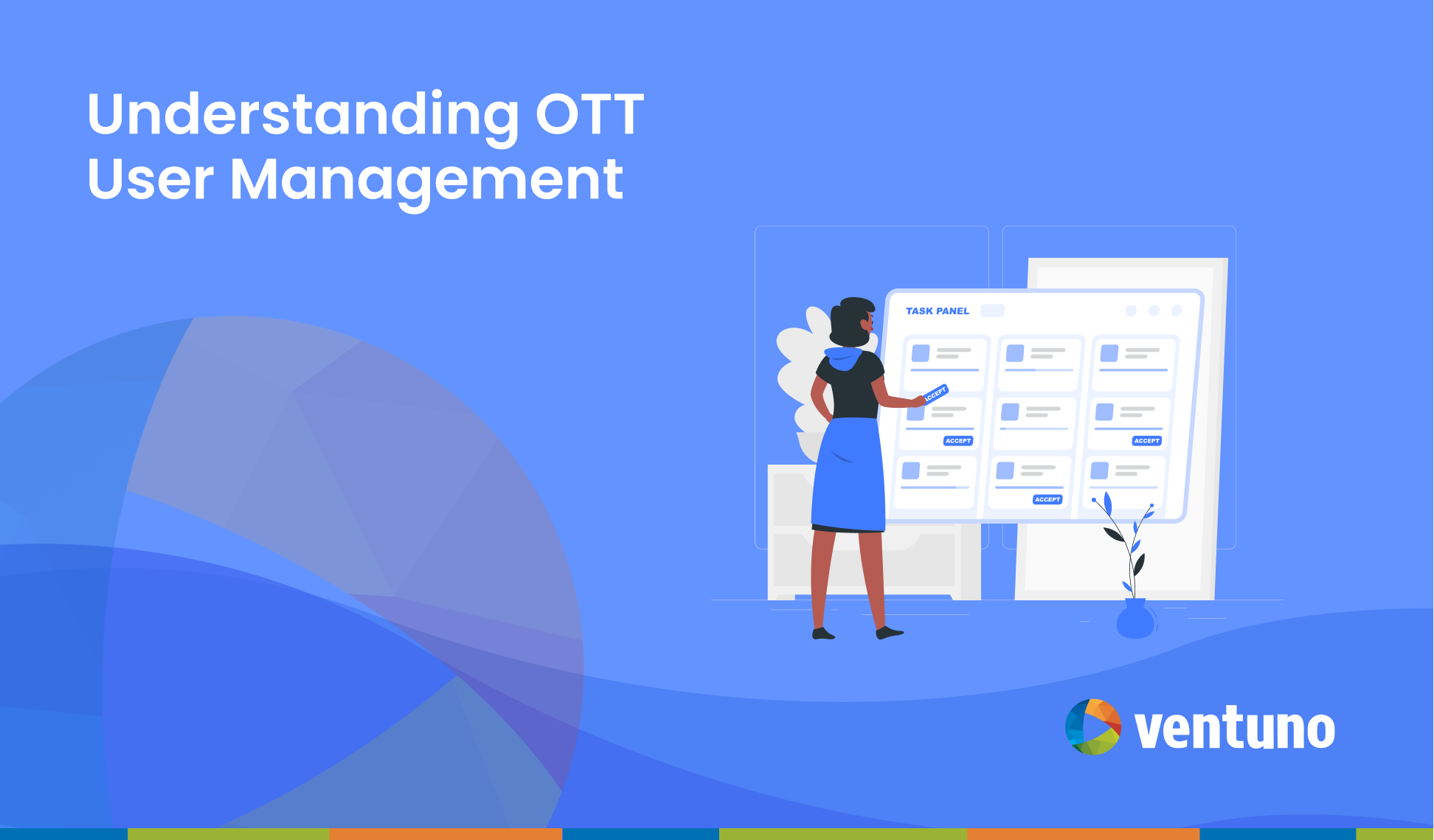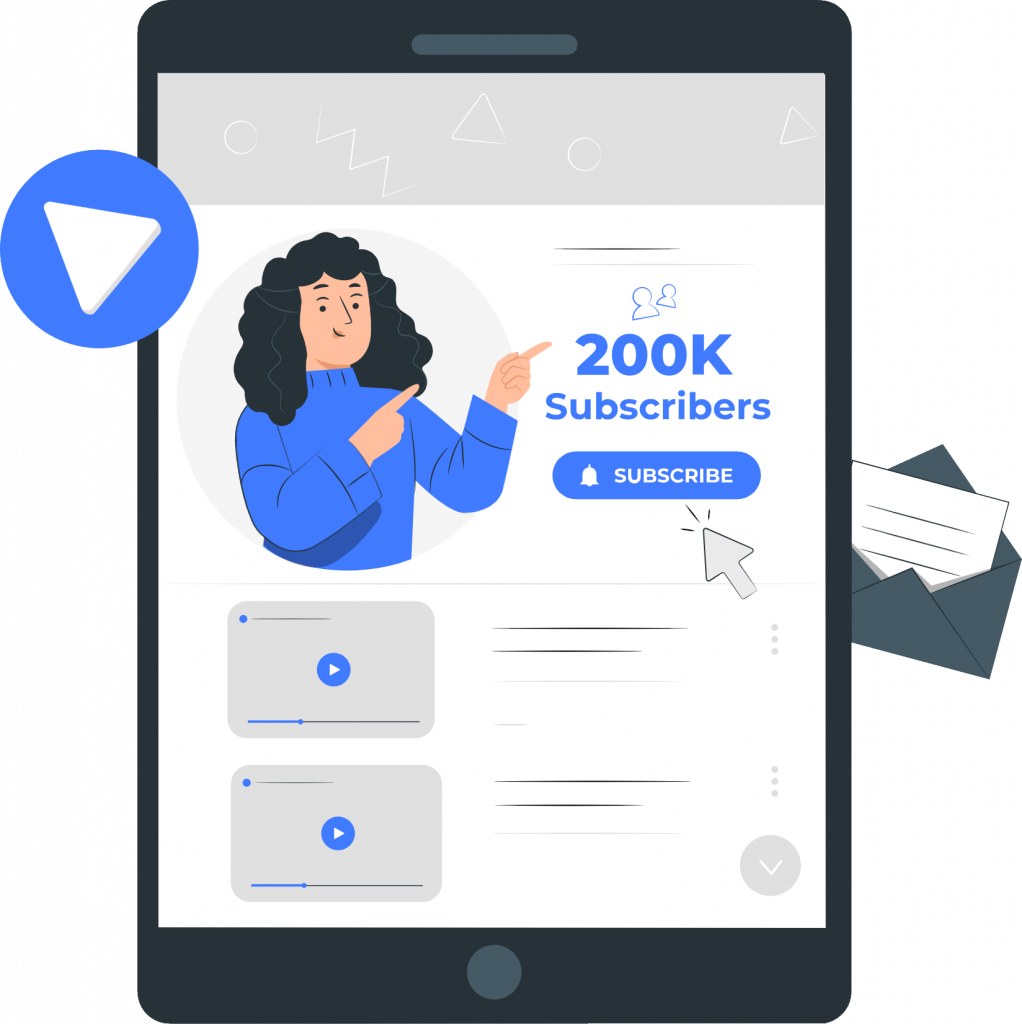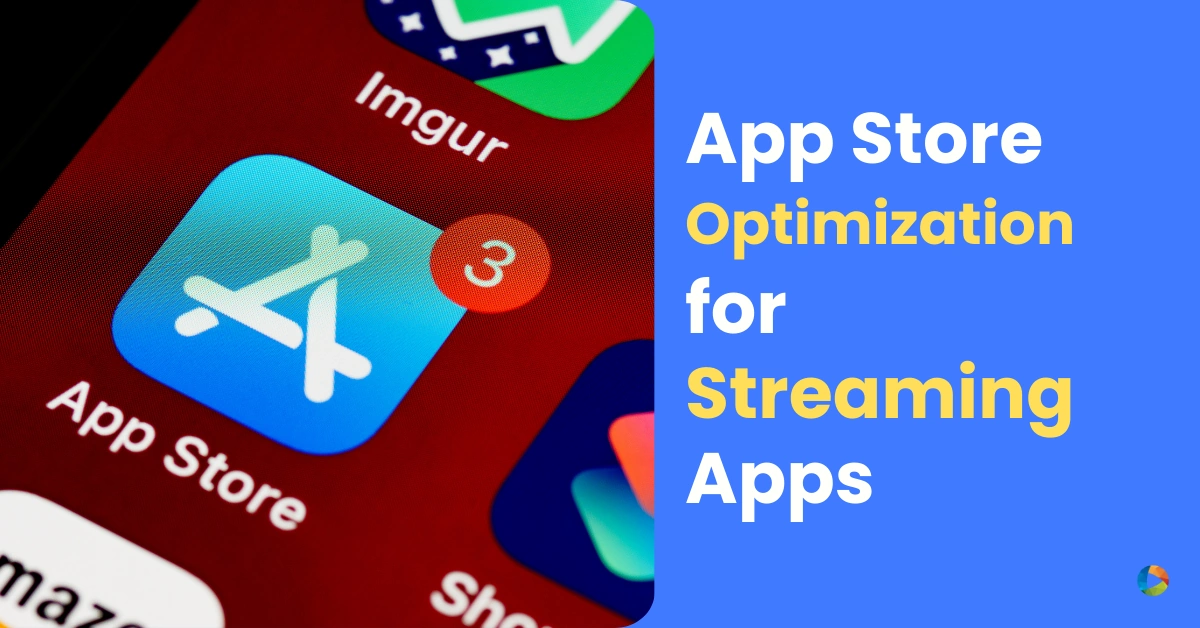Understanding OTT User Management
Last Updated on March 13, 2023 by Manas
You’ve just started a new video business! Great! Let’s walk through some of the challenges any streaming business faces while managing and scaling its service.
Are your employees able to access reports without wasting much of their productive time? Your viewers must be able to access your videos without any difficulty. After all, they have visited you for some relaxation.
Most importantly, how are you managing your partners? Do they have complete control over all your content or have you restricted it to their area alone?
If you have any of these concerns, thankfully there is a solution – a robust CMS with efficient user management capabilities.
At the most basic level, you will need a user management system that will answer two basic questions
❓Who is a part of your business network? and
❓What can they access?
Who is a User?
A user is someone who has a specific role to play in your service. A user can be a customer, an employee, or a content partner.
A customer typically consumes your content and ads, they make payments to subscribe to your service or buy individual content.
Your employees have a different set of responsibilities based on their roles, some will need access to your content but others will need access to analytics and few may need access to create and manage shows and their schedules.
Your partner may need to upload videos and commercials, and view reports relating to only their performance.
These people form the core of your business and you need to manage them efficiently to make sure your business runs smoothly.
What is OTT User Management System?
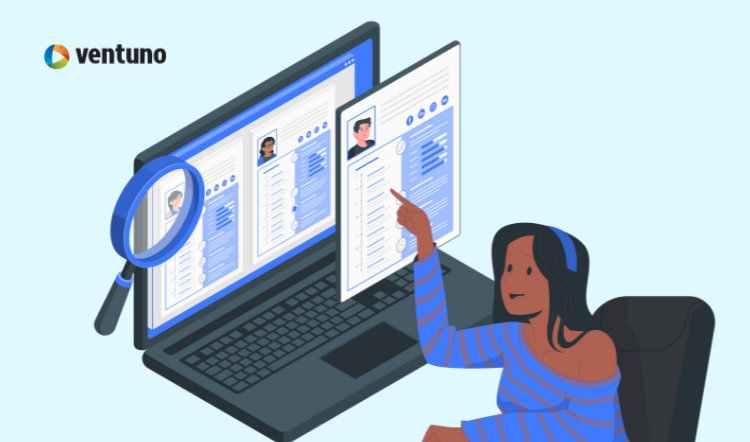
It is important to understand, OTT user management before diving into a user management system. An OTT user management system describes the ability of OTT service providers to manage the user profiles of customers, employees, and content partners.
In essence, OTT user management refers to the tasks involved in managing users of different roles and handling their access.
Alright, so a user management system, in its simplest form, is a tool that enables you to create, remove and maintain your users.
In order to be efficient, a user management system needs to include the following features and capabilities:
User Authentication
The most basic functionality of any user management system is to ensure the right person is using the system. This is done using a unique user id and password.
Also, both the user and the administrator must be able to reset the password when required.
Protection
Once the user is authenticated they must be able to access only the data that they are permitted to access.
In other words, content and data must be protected against unauthorized access by both employees and external users.
Delegate Roles
You must be able to assign different roles to different users and restrict access to only features that a user requires
Block and Delete Users
You must be able to delete accounts and privileges that are no longer required. For instance, if one of your employees leaves you must be able to delete their account.
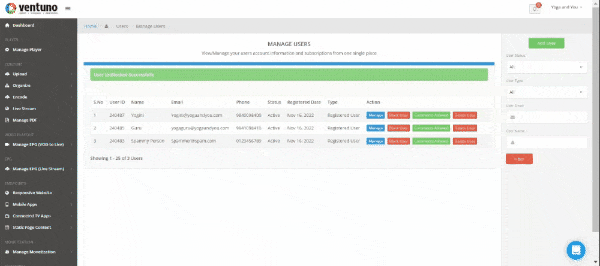
If you find a spam user you may also need to block such accounts to make sure they don’t come back.
Types of User Management
There are two distinct types of users and it’s important to understand their roles so that you can run your business smoothly.
The first type of user is external users – meaning your customers. They are the people for who you run your streaming business.
The second type of user is internal users, they can be your employees or business partners. These are the people who keep your video business running.
Customer Management
Managing customers is not as simple as managing your internal users, because customer management is not just about authenticating users to access certain areas.
In order to effectively manage your customers, it’s essential to see to their needs and respond to those needs appropriately.
So a good customer management system for your streaming business will encompass all the features you need, from onboarding a customer to engaging them and ensuring they are retained.
Customer Acquisition
Customer acquisition is critical for creating your OTT platform and developing a foothold in the highly saturated streaming market.
It is a no-brainer that, more clients mean more income, which means more profit for you.
Now, say you have a bunch of followers on a third-party streaming site like Patron or maybe even a blog. How do you migrate those users to your new streaming business? The answer is quite straightforward. All you need is their email addresses.
I will walk you through the steps of importing your users.
How to import customer profiles?
1. To add a single customer information you will just have to head the User section of the left menu, select Users and then Manage User
2. Click the Add User button and fill in their details and hit Submit.
3. To add multiple users in a go, you will have to select the Upload using CSV option
4. Download the sample CSV to make sure the format is right.
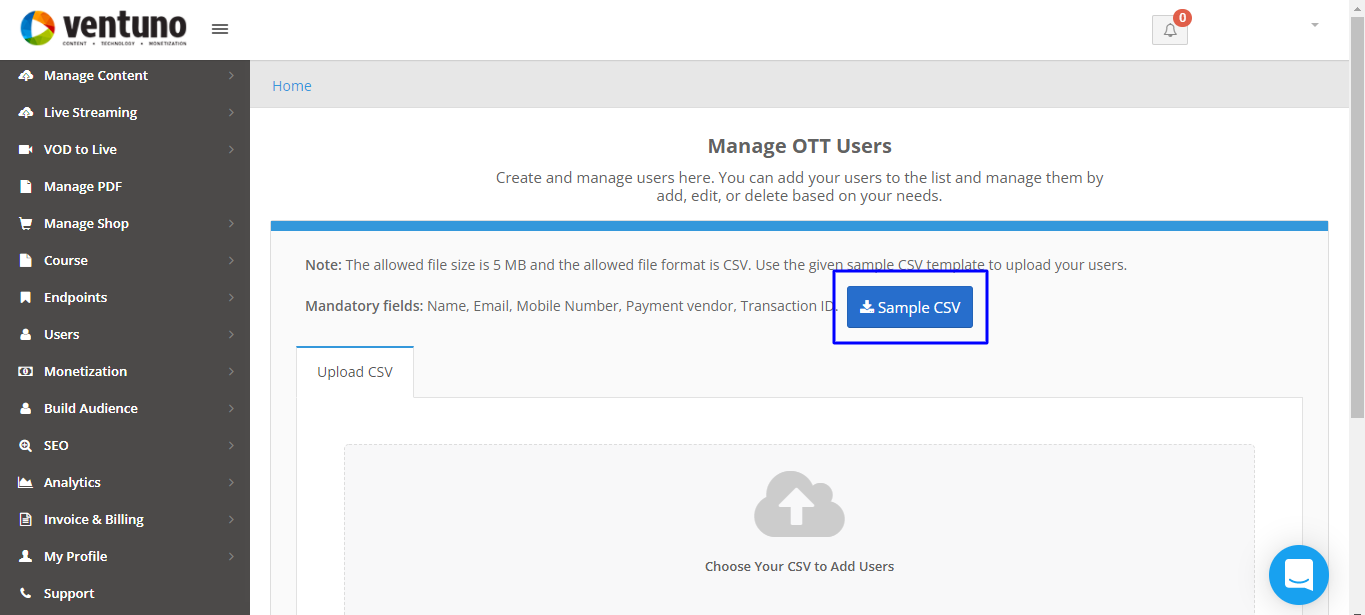
5. Fill in the name, email, phone number, plan details of the user in the downloaded CSV and Save it.
6. Now just upload it and you will find the details of the users listed on your screen. In case you don’t want to add any users from the CSV, you can unselect them (unchecking the checkbox), and once everything is right click on the Proceed button.
Tada! you have added the users to your service
You can always manage their accounts, plans, and more later.
Now that you have imported all your users you must be capable of editing their account details and adding/removing/editing plans for them.
This method of importing is great when you already have a bunch of followers, but how do you acquire completely new users.
The answer is straightforward – acquiring organic search traffic
While Google tries to automatically understand details about your website and videos, you can explicitly provide information, such as the description, thumbnail URL, and duration.
This will make it rank higher on searches. And trust me when I say this we have tried this and it has proved to work amazingly for our clients.
Then, optimize the metadata – filling in the title, description, cast and crew, award information, etc for your videos and shows.
How to Search Engine Optimize Your Streaming Website?
1. From the Endpoints section of the left menu, select Website, and then Responsive Website.
2. Head to the Pages Tab to see the list of pages you have created for your website.
3. Click on the ▼ down arrow symbol to the right of any page to expand the contents of the page.
4. Head to the SEO section and expand it by clicking the down arrow
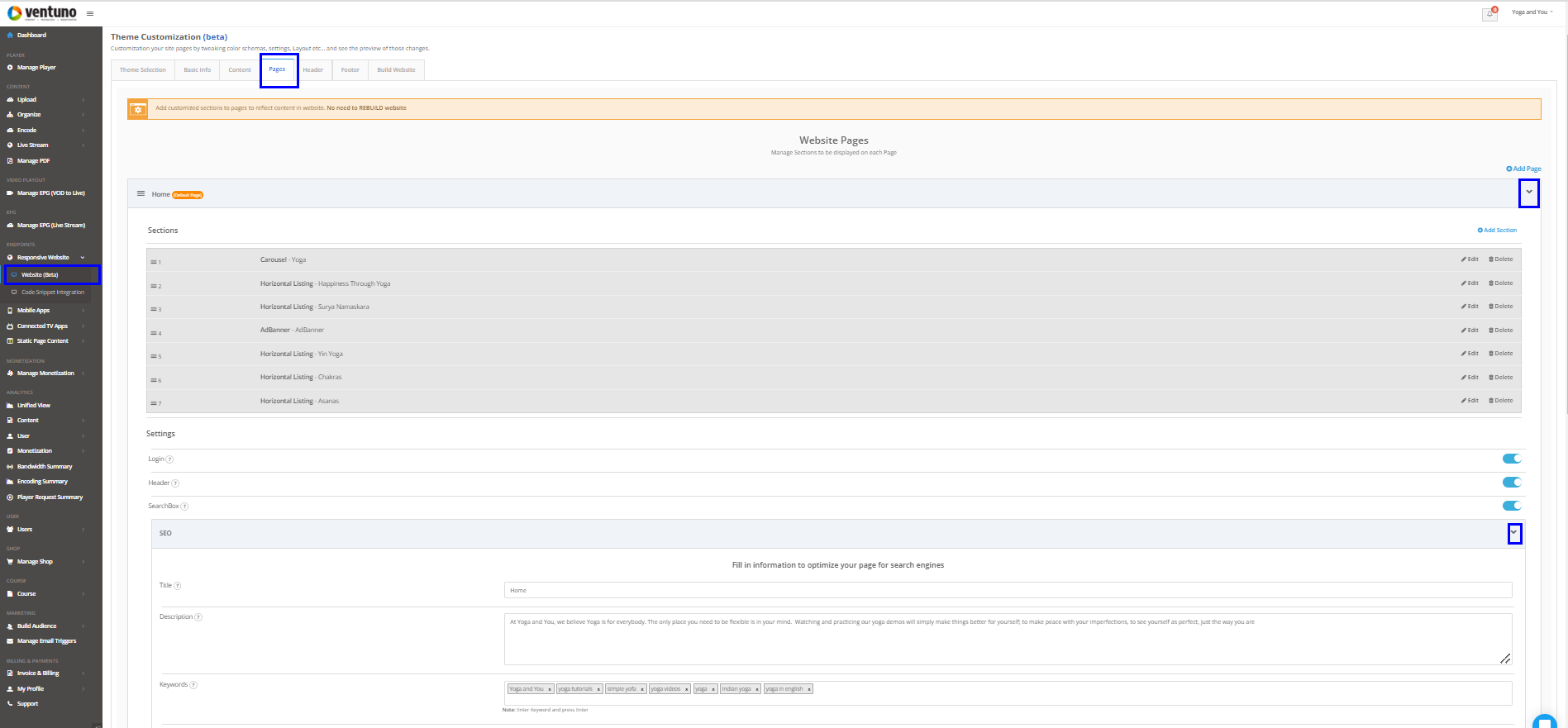
5. Fill in the title, description, and keywords.
6. Hit the Save button once you fill in the details.
Also, optimize the metadata of your video content and shows. This will not only help with organic traffic but will also help with content discovery and organization.
Customer Engagement
Engaging customers through connected experiences strengthens your relationship with them.
The more you engage your users and add value to their experience, the more likely they will think about your brand when they sit in front of their devices for some entertainment.
Notify them when you add some new and relevant content with push notifications and email campaigns.
Also, enable live chats, comments, and review features so that your users can engage with your content
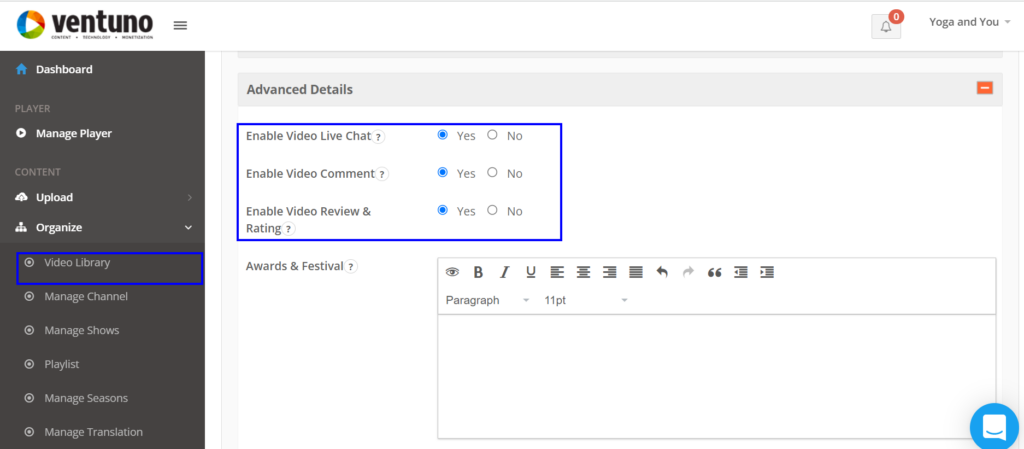
Make sure you regularly monitor your comments, chats, and ratings this will give you first-hand information on what your users think about your content.
Customer Service
And best of all, Ventuno’s user management system includes an Impersonate as a User option, that will help you see your streaming platform just the way your user sees it and help them solve
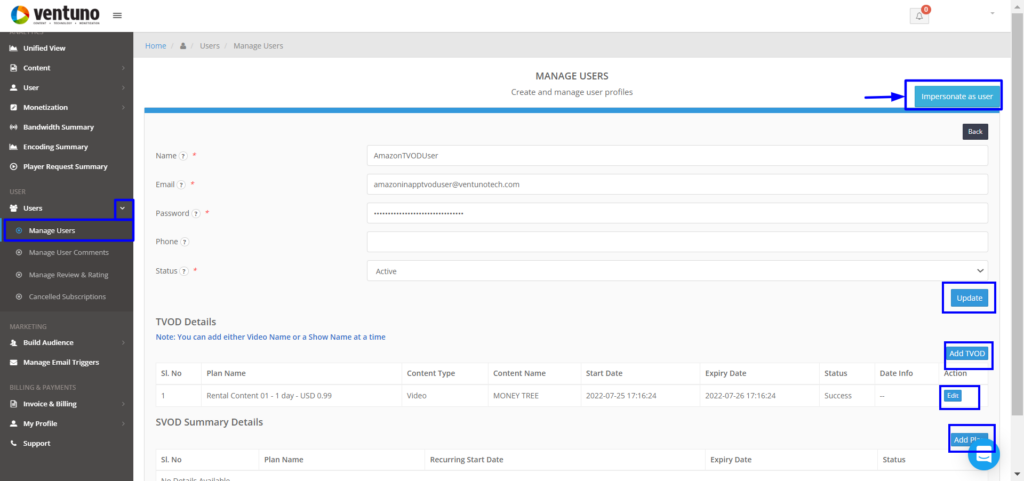
In addition to this, you have options to add plans, extend their validity, or even forgive invoices. This could be especially useful when you will want to extend a plan’s validity for a user in special cases.
You could also see the complete history of the devices, browser, location, and even the IP address from which a particular user is logging in to see your content.
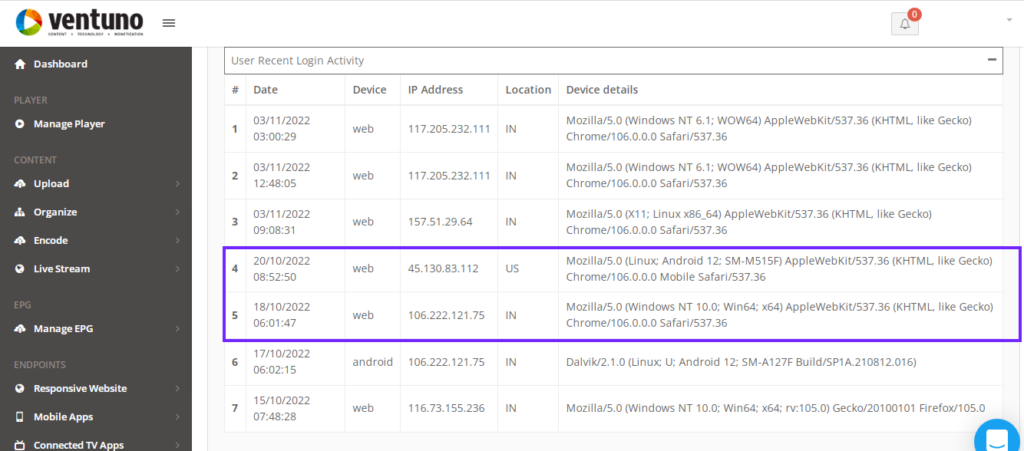
In this case, the user could have genuinely traveled. But if you notice frequent location and IP changes it could be a case of password sharing. This level of granular details lets you identify if multiple users are sharing passwords to save some bucks.
Customer Retention
When you focus on retention, your churn rate drops, so you need fewer new customers to grow.
Moreover, loyal subscribers also act as advocates of your streaming service.
Gift cards and referral codes are the most common ways of making your users advocate your streaming service.
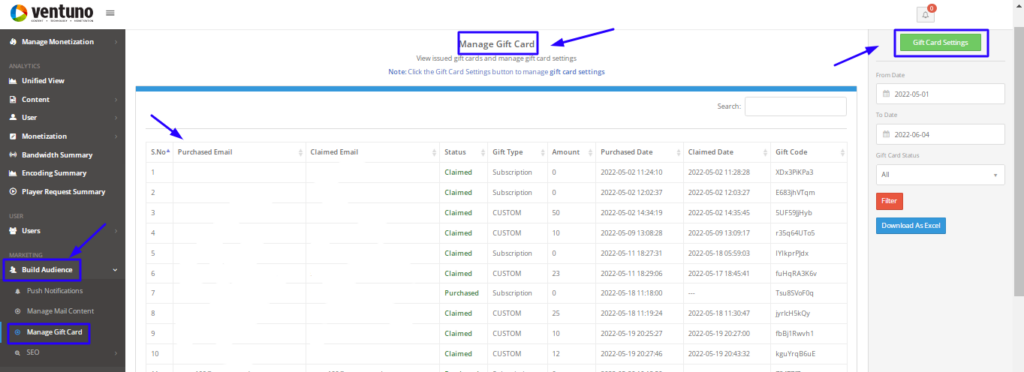
You can check, who purchased and who redeemed a gift card when it was purchased and claimed. You can filter and sort this information by date and status.
When a customer leaves make sure you try your best to make them stay. This can be done by giving them special discounts and offers.
How to setup Customer Retention Journey
1. From the Monetization section of the left menu, select Manage Monetization and then Coupons.
2. Select Manage Retention Coupons.
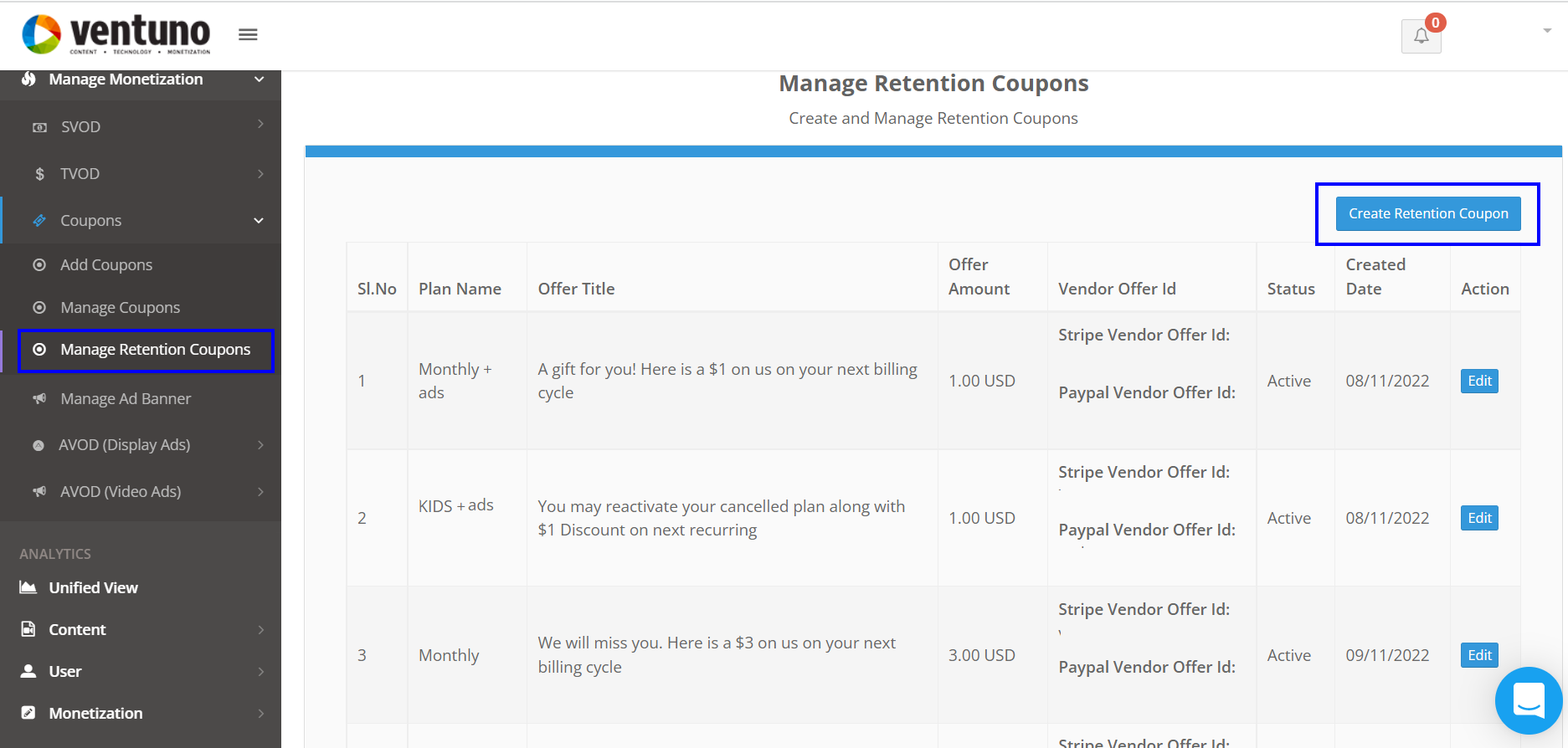
3. Select the plan and fill in the coupon details.
4. Hit the Submit button
What happens when a user cancels?
1. When a user cancels they will see a list of cancellation reasons – they can choose one of the reasons that you have already filled in.
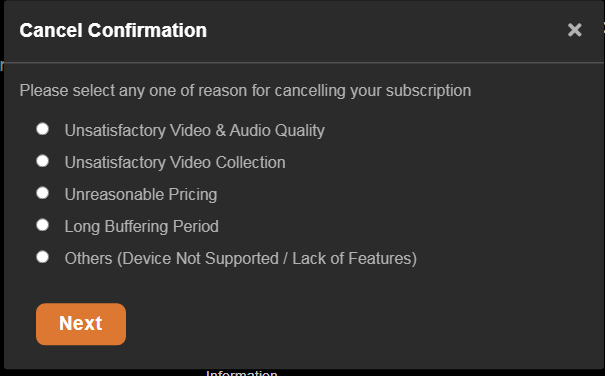
2. Now, you can change their mind by giving them a discount that they cannot resist. This will appear as a popup similar to the below message
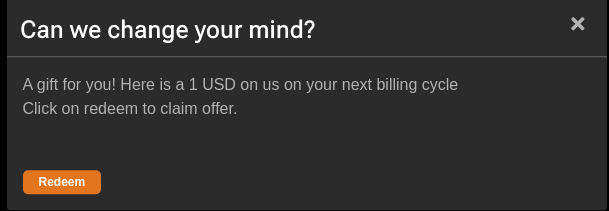
3. When the user clicks Redeem, the discount will apply on their next billing date.
4. If the user closes the popup and decides to exit, they will receive an email (which can be customized). Here is how it will look:
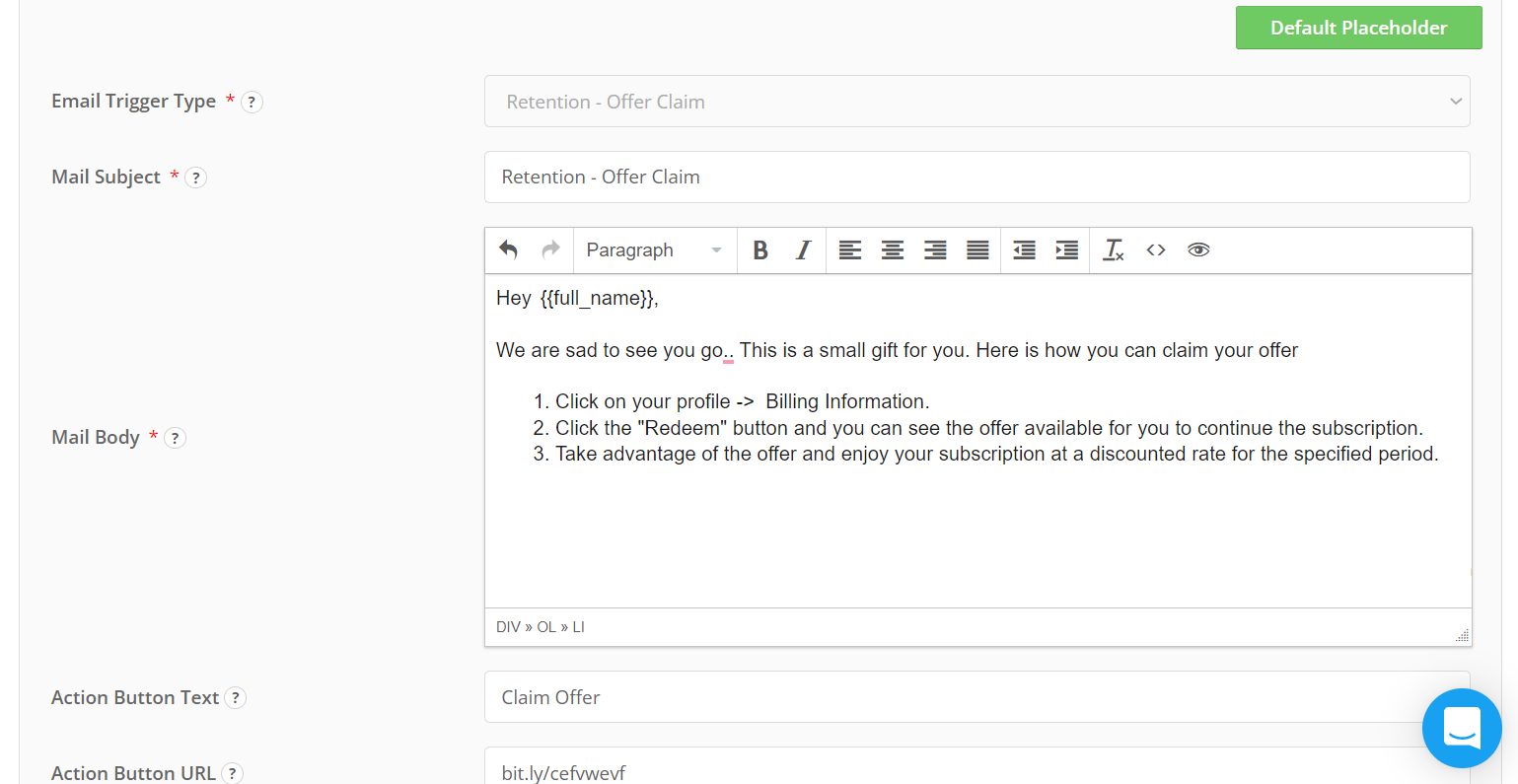
If the user claims the offer, the discount will be applied on their next billing.
They will see this information on their profile page.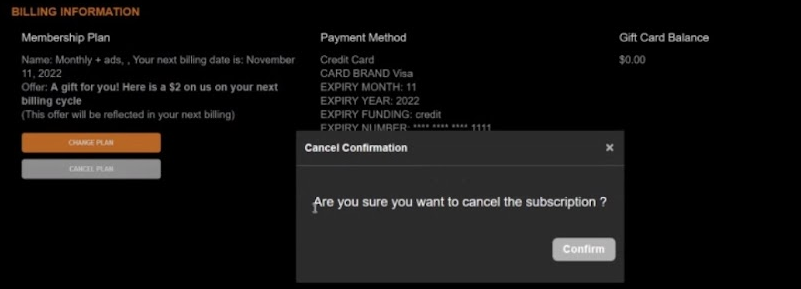
Employee Management
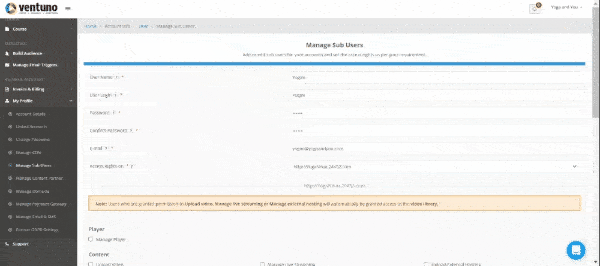
You may have multiple employees working in different departments performing different roles. People from the content team may be responsible for uploading videos and their subtitles and thumbnails
And an employee in the marketing team generally requires access to different content and likely doesn’t need access to your monetization analytics,
On the other hand, a finance employee may only require access to the analytics section and not to the content.
Don’t worry, I won’t bore you with who does what, I will show you the essential stuff that drives them all without any hassle
How to create a sub-user profile?
1. From the My Profile section of the left menu, select Manage Sub Users
2. Click on the Add button.
You will see the Manage Sub User Page
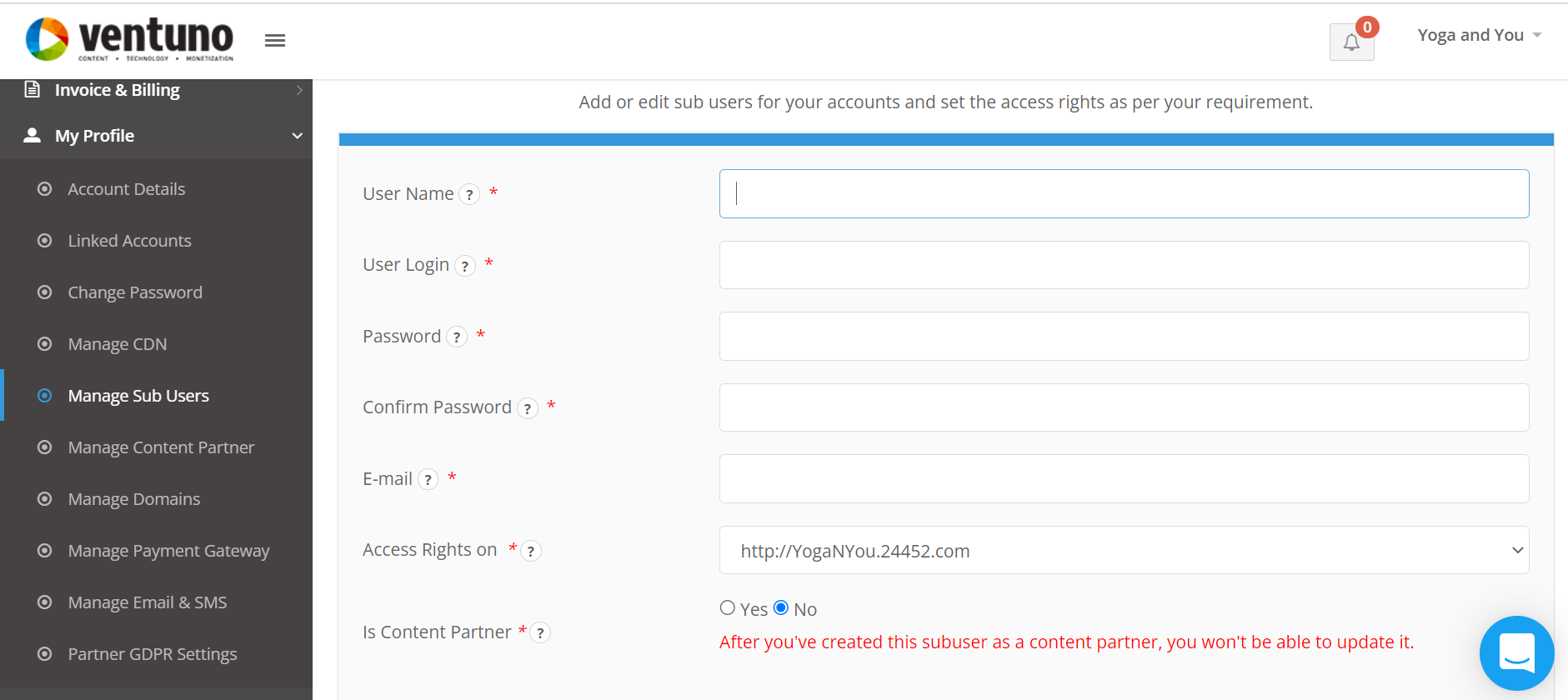
3. Enter the name of the user in the User Name field, the login ID in the User Login field, and the password in the Password and Confirm Password field. The user will be using these credentials to log in to their account.
4. In Access Rights, choose the domain (if you have multiple domains) and enable the features that you want to enable for the user you are creating.
5. For your employees, make sure you select No in the Is Content Partner field.
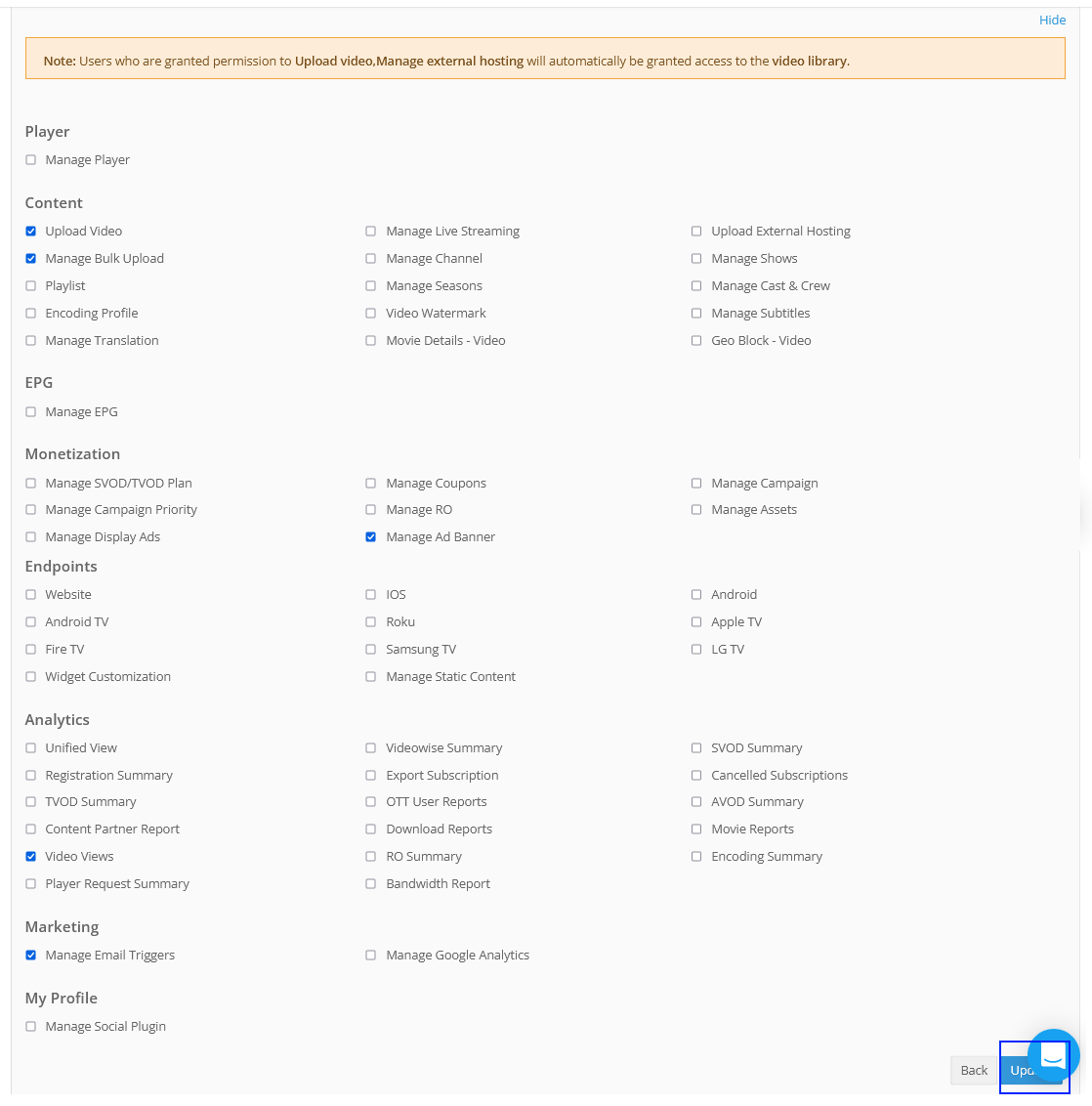
6. Select the accesses that you want to grant the user and click on the Submit button
You may have noticed that the permissions are categorized into sections like Content, EPG, Monetization, Marketing, Analytics, and so on for your convenience.
Content Partner Management
You will have to partner with other creators to strengthen your video library. While working with these partners you will have some kind of agreement on the revenue share. You need to manage them all in one place.
How to create a content partner profile?
1. Create a sub-user profile as you did for your employees, but select Yes in the Is Content Partner field
2. From the My Profile section of the left menu, select Manage Content Partner
3. Click on the New Partner button and you will see the Manage Content Partner Page
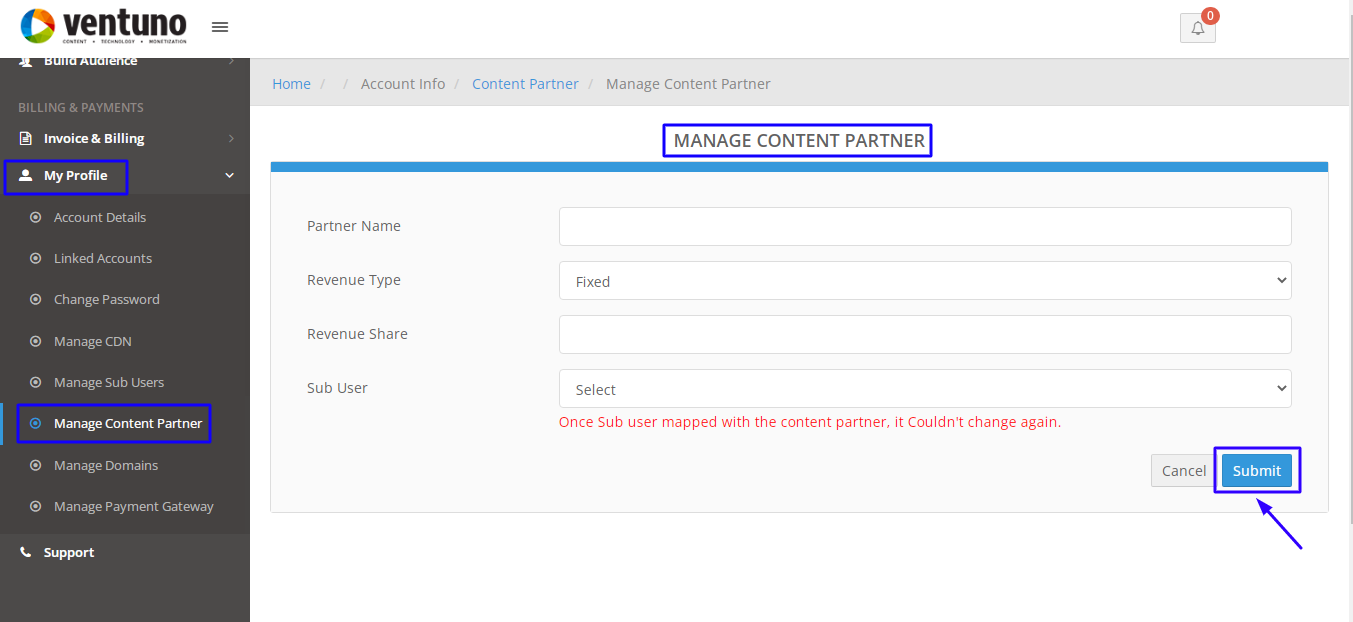
4. All you need to do now is, type in a name for the partner, then select their Revenue type (Fixed / Percentage) and the Revenue share.
5. Finally, select the sub-user profile created for the partner from the dropdown in the Sub-user field and hit the Submit button
This is a really cool feature that will reduce your workload to half while computing your monthly revenue share as all this information will be available in the content partner report.
Take Away
The user management system must be robust and user-friendly. It must enable you to control the level of access given to any user and manage them easily.
You can also decide on who to onboard and off-board and what access they have.
Want to check our OTT management platform? Give it a shot!
Looking to launch your streaming app?

